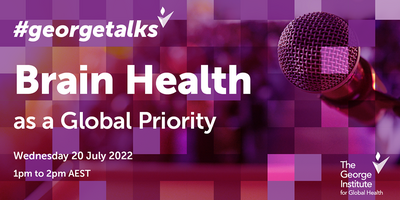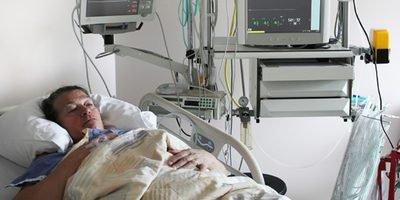
New study on brain cooling turns treatment advice on its head
A large international study on the effects of cooling the brain after a cardiac arrest shows that contrary to current treatment recommendations, it doesn’t actually improve survival or recovery. The study, published today in the New England Journal of Medicine, suggests that a less intensive approach to temperature control in these patients may be warranted. Dr Manoj Saxena, Post-Doctoral Research Fellow at The George Institute for Global Health and intensive care doctor at Bankstown-Lidcombe Hospital, helped lead the study for Australian hospitals that took part.
“Since 2005, treatment guidelines for unconscious cardiac arrest patients have recommended cooling the body temperature down to 33 degrees Celsius,” he said.
“This was based on two studies previously published in in the New England Journal of Medicine which appeared to show that it greatly improved survival, but the evidence for the guidelines was considered by many to be weak.”
“These new results now strongly indicate that maintaining normal temperature should be recommended instead, so now we can focus our resources on other things, and prioritise other aspects of cardiac arrest treatment,” he added.
When the heart stops after a cardiac arrest the supply of oxygen and other nutrients to the brain is interrupted and if this lasts more than a few minutes, it can lead to brain damage. Cooling has been considered a potential treatment for injured brain cells for over 50 years – it slows metabolism, reducing swelling, and may change the way that brain cells react to injury, putting them into repair mode. But after many types of brain injury, there is normally a drop in body temperature in the first few hours, followed by moderate to high fever in the few days afterwards. So could it be that fever is a normal response to injury and that changing its course may have no effect or may even cause harm?
To answer this question, an international researcher team led by Lund University, and in Australia by The George Institute for Global Health, supported by the Australia and New Zealand Intensive Care Society Clinical Trials Group, studied 1850 patients who suffered a cardiac arrest and were unconscious when admitted to one of 61 hospitals around the world between November 2017 and January 2020. The patients were randomised into two groups when they were admitted to hospital. In one group, patients were cooled down to 33 degrees according to existing guidelines - a temperature that was maintained for 28 hours. In the second group, the patient's body temperature was monitored, and only those who developed a fever (about half the participants in this group) were cooled to a normal temperature.
Researchers followed up on survival rates for patients six months after receiving care for cardiac arrest. They also investigated how functionality in everyday life was affected in the surviving patients.
“We saw that just over half the patients treated with hypothermia either died or had a severe functional impairment six months later, which was similar to the rates seen in the group who were kept at normal temperature,” said Dr Saxena.
“This could mean that a simpler approach to treatment now becomes standard practice – doctors can simply monitor the patient’s temperature and only use cooling if it goes above 37.7C. This less intensive approach requires less time and equipment, freeing up staff to focus on other important activities,” he added.
Niklas Nielsen, who led the whole study from Lund University in Sweden, said treatment guidelines needed to be based on strong evidence from well-designed studies.
“It is important to set high standards for clinical studies, partly to determine what should be introduced in healthcare, partly to challenge the practices that are already in use - to ensure that we have got it right and that healthcare is evidence-based. The results produced strongly indicate that normal temperature should be recommended, not hypothermia,” he said.
“The results are important, but not unexpected. For 20 years we have applied and believed in these practices which we now see do not make a difference for survival. Now we can use the resources on other things, and prioritise other aspects of the acute phase of cardiac arrest,” said Josef Dankiewicz, researcher at Lund University and resident physician at Skåne University Hospital, and first author of the study.







